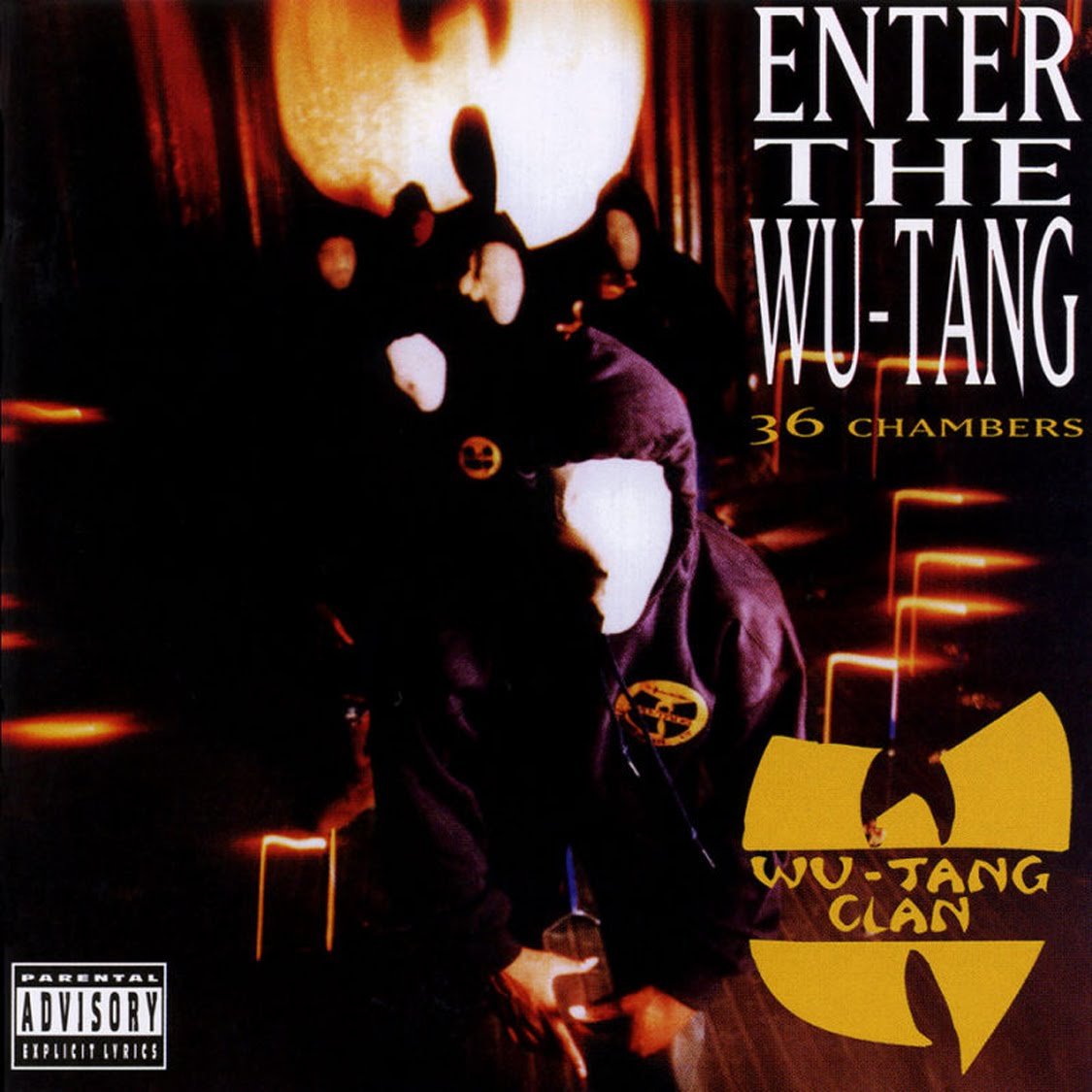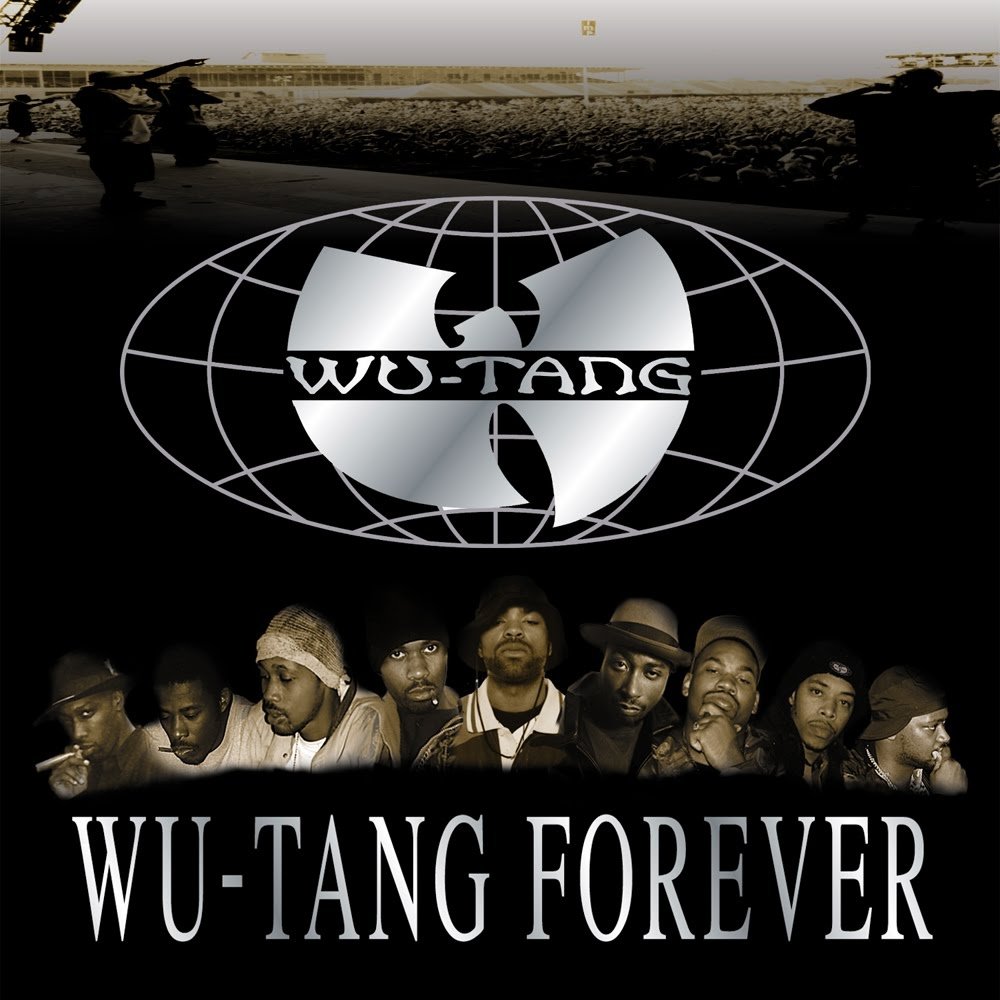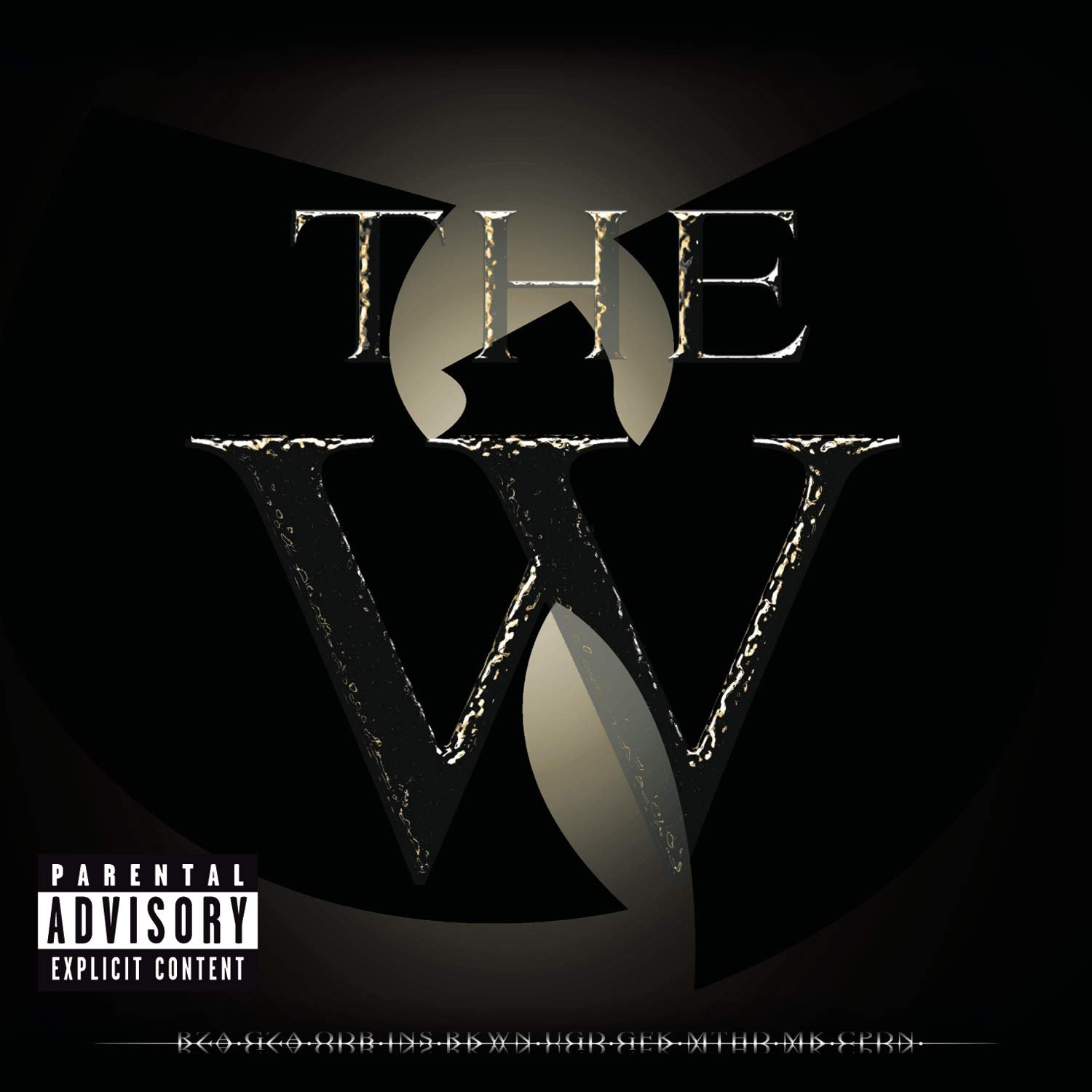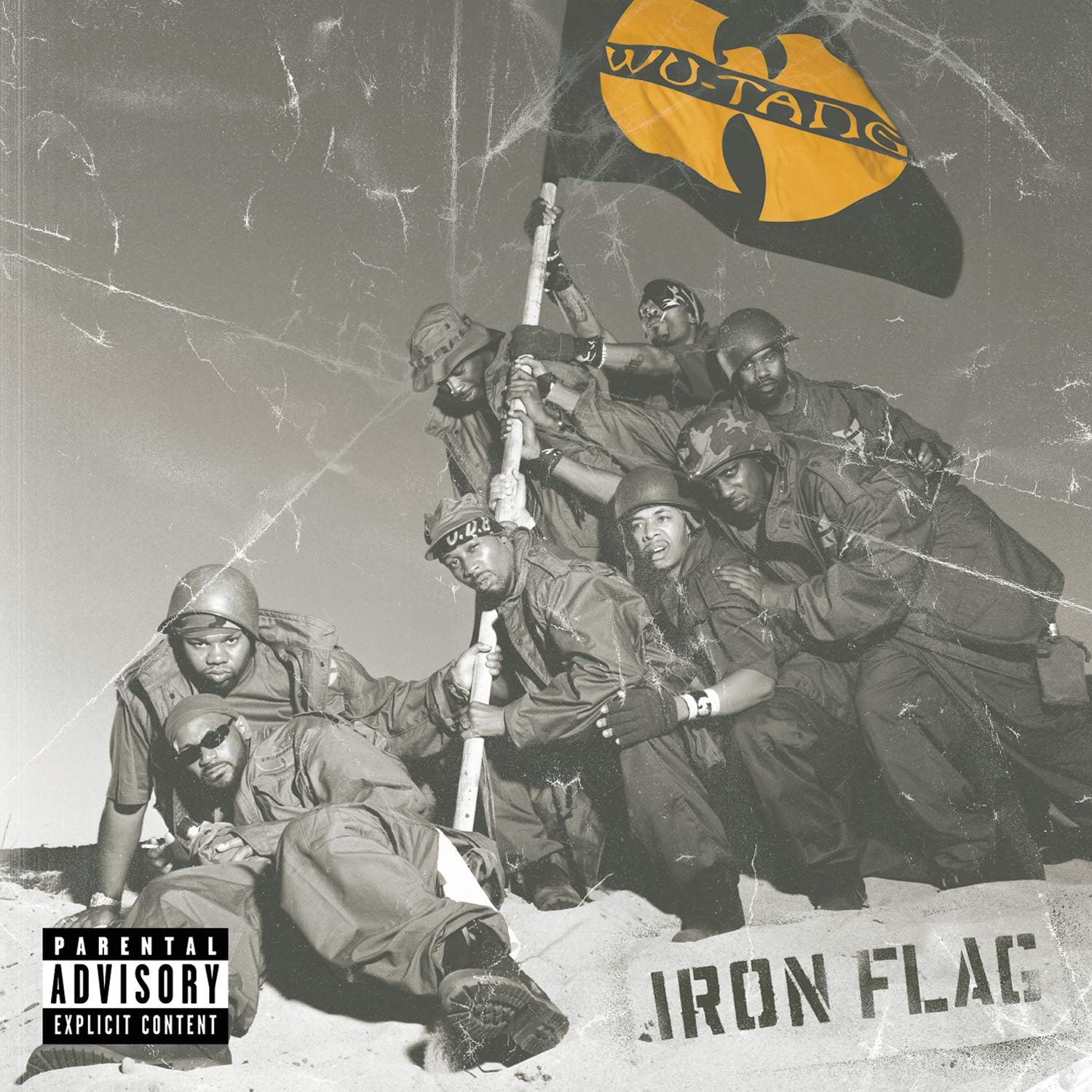Happy 15th Anniversary to Wu-Tang Clan’s fifth studio album 8 Diagrams, originally released December 11, 2007.
As an Amazon affiliate partner, Albumism earns commissions from qualifying purchases.
It’s generally accepted that the Wu-Tang Clan came close to ending as a group with 8 Diagrams. Released 15 years ago, their fifth album landed with a commercial thud. Critics didn’t know what to make of it and crew members disowned it. The collective, which once controlled hip-hop’s cultural narrative, was seemingly collapsing, with only their “leader,” Robert “RZA” Diggs a.k.a The Abbot, possessing much interest in keeping it going.
8 Diagrams is indeed an enigma of an album. It reflected RZA’s vision of where he thought Wu-Tang Clan needed to move across hip-hop’s shifting landscape after the death of Russell “Ol’ Dirty Bastard” Jones. It’s all but completely inaccessible from a commercial perspective: a brooding 71-minute endeavor that leaned into orchestral arrangements and live musicianship, held together by a vague theme of striving to be a better person. There’s also a baffling amount of R&B/soul vocalists, most of whom don’t serve the project well.
And yet, 8 Diagrams is far from the disaster that some make it out to be. The lyricism is top notch. After being scarce for a few Wu-Tang albums, Gary “GZA” Grice is featured fairly prominently, especially through the album’s back half. Lamont “U-God” Hawkins sounds as inspired as he’s ever been. Dennis “Ghostface Killah” Coles is barely present, but amazes during his limited appearances. The production might not be as razor sharp, but RZA, producing all but two tracks on the album, definitely creates a mood. While it will never be considered their best album, 8 Diagrams is hardly a stain on the legacy of the Wu.
The “problem” was that, nearly fifteen years after recording their debut, the members of the Wu-Tang Clan had, to varying degrees, become established solo artists. So, while it used to be all good for the Clan to form like Voltron under RZA’s guidance, almost a decade-and-a-half later, the other seven surviving members were industry vets with strong opinions who weren’t shy about sharing them.
RZA has said he adjusted his approach to the Wu’s albums as the years passed. Their debut, Enter the Wu-Tang (36 Chambers) (1993) was recorded as a dictatorship, with RZA having the first and last word. The Wu-Tang Forever (1997) sessions operated as a democracy, with each member having their say. But with 8 Diagrams, RZA tried to reign things under his control, deciding that while the others could express their opinions, the final decisions were always his own.
The album took nearly a year to record and was supposed to drop in November, before getting delayed to early December. It was then delayed again, so as not to compete with the release of Ghostface Killah’s seventh album, The Big Doe Rehab (2007). Not only was 8 Diagrams the first album that the Clan recorded without input from Ol’ Dirty Bastard, but it was also the first Wu-Tang release not on Loud Records. The imprint had been absorbed during the great record label consolidation of the mid ’00s, and the group decided to remain with the executive who “discovered” them, Steve Rifkind. They signed to SRC, Rifkind’s imprint, which Universal distributed.
Corey “Raekwon” Woods and Ghostface Killah disavowed 8 Diagrams even before it was released. Raekwon hated the musical direction, and famously derided RZA for becoming a guitar-wielding “hip-hop hippie.” Ghostface, whose solo career made him the most respected member of the Clan during this era, said he pushed for RZA to give up some of the production control, endorsing the group bringing in outside producers like Kayne West and The Neptunes. Years later, he was still bitter about the experience, telling XXL magazine in 2013 that he was still upset RZA didn’t give the people what they wanted.
Listen to the Album:
Initially, it did appear that the Clan was going the more rugged route, and that RZA was open to enlisting outside producers. The initial teaser single was the bruising posse cut “Watch Your Mouth,” featuring all eight members exhibiting their verbal sword styles over a rock-hard DJ Scratch track. Unfortunately, the song didn’t appear on the final version of 8 Diagrams, disappointing some fans.
The commercially released version of 8 Diagrams does start strong with the grim “Campfire.” RZA weaves together samples from classic kung-fu flicks with vocal samples from the Persuasions’ a cappella version of “Gypsy Woman.” Its eerie atmosphere sets the tone nearly as well as the raucous “Bring the Ruckus” from Enter the Wu-Tang. Even if the album doesn’t always maintain that level of quality, it’s a decently representative entrée of what’s to come.
The live instrumentation works the best when RZA keeps things simple and relatively subtle. Clifford “Method Man” Smith, U-God, and Elgin “Masta Killa” Turner each deliver menacing verses on “Get Them Out Ya Way Pa,” describing their efforts to seize control of the street over a spare bassline and intricate strings and guitar. Masta Killa closes the track with his unorthodox, almost disjointed flow, rapping, “Take cover over RZA instrumental / I’m damn near invincible, it’s simple.”
RZA mixes live material and samples effectively on “Gun Will Go,” pairing an understated bassline and an evocative string arrangement with vocals from Johnny Jenkins’ version of “Walk On Gilded Splinters” and filtered horns from Baby Huey’s “Listen To Me.” Method Man captures the desolation of “Poverty Island,” a “slum where they ambulances don’t come” as he attempts to sell illicit substances. “It is what it is though, you fuck with the kid flow,” he raps. “That make it hard to get dough, the harder the kid go.”
The Clan didn’t completely abandon its trademark sound on 8 Diagrams. There are examples of classic raw Wu shit nearly out the gate. “Take It Back,” 8 Diagrams’ best song, features Raekwon, Ghostface, Jason “Inspectah Deck” Hunter, and U-God trading rugged verses, sprinting across a gritty throwback track produced by Easy Mo Bee. The production O.G., who’s worked with the Clan since their early days, does an excellent job chopping a section of Bob James’ “Nautilus.” While Deck proclaims, “Son, I've seen Hell, fell into the palms of Satan arms / Don that I am, made ’em bow in the face of God,” Ghostface boasts, “This is real talk, shank lullabies / Ben Franks, we like Jet Blue, we stay hella high.”
“Rushing Elephants” possesses similar pulsing energy, as the Clan members are at their most aggressive rapping over a sample of the Ennio Morricone helmed theme from an obscure French spy film. GZA makes his presence felt with his verse, “[h]itting them from well concealed firing positions with explosiveness that’ll make the deaf listen.” The sinister “Weak Spot” comes the closest to capturing the feel of Enter the Wu-Tang. Raekwon contributes an outstanding slang-laden crime rhyme verse, but GZA is again the star, giving a clinic while using chess strategy to eliminate his enemies.
Overall, the production on 8 Diagrams only falters when RZA doesn’t leave well enough alone. An early mixtape features a superior version of “Unpredictable” than what ended up on the commercial release. The first incarnation, titled “Thug World,” features RZA and Inspectah Deck kicking dope verses over a wailing string arrangement. In contrast, the final version, “Unpredictable,” is thoroughly overcooked. It features intrusive electric guitar licks, heavily warped sung vocals on the hook, and a less potent RZA verse.
RZA also needlessly complicates “The Heart Gently Weeps,” one of 8 Diagrams singles. The song had its origins as Ghostface Killah’s “My Guitar,” (occasionally referred to as “Black Cream”) apparently an outtake from The Pretty Toney Album (2004) sessions. It eventually became a Limewire/mp3 blog era classic. In its initial incarnation, it was one of Ghostface’s “Holla” specials, with Starks kicking street tales over the entirety of Jimmy Ponder’s cover of The Beatles’ “While My Guitar Gently Weeps.”
Enjoying this article? Click/tap on the album covers to explore more about WU-Tang Clan:
On 8 Diagrams, the spine of the idea is still present, as RZA boasted to the press that it was the first song with an officially cleared Beatles sample. The track incorporates some portions of the Jimmy Ponder version as well, but on the mic, Ghostface is joined by Raekwon and Method Man, each delivering hyper-detailed accounts of street violence in unique Wu-Tang fashion. With just those ingredients, the track would be considered an undisputed classic. What the track did not need is vocals from Erykah Badu. Or the Red Hot Chili Peppers’ John Frusciante playing lead guitar. Or Dhani Harrison, the son of George, playing a 1961 Gresch acoustic guitar that Russell Crowe gifted to RZA at the end of the American Gangster film shoot. These excesses turn the track into a muddled mess.
RZA eventually rights the ship, and occasionally figures out how to properly integrate the musical guests. The subtle “Windmill” is another strong entry, which also features Frusciante on guitar. Here, his presence strengthens the song, with guitar licks complementing the solid drum track and ghostly vocal samples. “Speaking my mind, fall in line when I spit mine,” Method Man raps. “Still in my prime, still will shine ’til it’s quit time.”
The only guest vocalist who adds much of any value to 8 Diagrams is George Clinton. The funk guru may have been a bit long in the tooth when he recorded his appearances for the album, but he definitely still made a lasting impression. Clinton first contributes a memorable hook to the swiftly moving “Wolves,” a sort where RZA’s kitchen sink proclivities actually pay off. U-God leads things off with his best verse on the album, as he describes moving through the New York cityscape like a hungry predator. “Next shot go right through your hovercraft,” he growls. “You do the math my acid tongue slash / When will you learn it's return of Shaft? / The genuine thriller, the Miller Draft?”
Clinton makes an encore performance on “Tar Pit,” one of 8 Diagrams’ bonus tracks. The song features one of the most collectively pedestrian lyrical performances on the album, with only affiliate Street Life sounding inspired. Meanwhile, Clinton practically catches the Holy Ghost, taking up about 60% of the track’s five-minute length with a stream of nearly uninterrupted rants, limericks, and adlibs.
The RZA solo track “Sunlight” is the weirdest track on 8 Diagrams. The song is an unorthodox sequel to “Sunshower,” RZA’s previous solo track that appeared on import versions of Wu-Tang Forever. But instead of breaking down the crew’s history, The Abbott disperses spiritual lessons, delivering verses studded with references to both the NGE and Orthodox Islamic teachings.
The Clan honors the life of Ol’ Dirty Bastard multiples times on 8 Diagrams. The most prominent of these instances is “Life Changes,” a lengthy opus where seven of the core members (minus Ghostface) reminiscence about their fallen brother, some relating their long histories with Mr. Jones, others explaining how they tried to cope with the news of his death. There’s great power in each emcee’s emotional contributions, as many open up in ways they’ve never done on record. The song’s only drawback is that using the Freda Payne sampled hook at the beginning of the track and after every single eight-bar verse gets a wee-bit excessive.
Another tribute to ODB is the inclusion of “16th Chamber” as a bonus track on some iterations of 8 Diagrams. The track is an unmixed remnant of the early 1990s pre-Enter the Wu-Tang era, with both Method Man and Dirty delivering fierce verses, parts of which would later appear on their respective solo albums. The track is fittingly unmixed, standing in grimy, unpolished contrast to the material on the rest of the album.
Though 8 Diagrams has its flaws, it’s still better than any Wu-Tang Clan project that’s been released since. Over the last 15 years, there have been way too many stapled together projects bearing the Clan’s name. This includes a pair of RZA/Wu-Tang “endorsed” compilations released in the late ’00s/early ’10s (both solid but unremarkable), along with the more infamous album sold to pharma bro Martin Shkreli for $2 million and Wu-Tang DJ/producer Mathematics compilation repackaged as a Wu-Tang Clan album after the fact. And most of those projects are stronger than A Better Tomorrow (2014), RZA’s last effort to bring the surviving core members of the crew together for one last hurrah. Suffice to say, I really doubt I’m going to be writing an anniversary tribute to A Better Tomorrow anytime soon.
For what it’s worth, RZA has acknowledged his approach to 8 Diagrams wasn’t his best idea. “I failed,” he said in a 2014 interview with Esquire. “That's on me, too. Because I wasn't able to unite everybody, all right? We weren't together. Yeah, I lost some faith in the whole and therefore they weren’t as commercially successful or spiritually successful.”
Given these sentiments and the Clan’s subsequent fiascos, RZA finally ceded control of all future Wu-Tang albums. In 2016, he announced that Ghostface would helm the collective’s next release. However, that album has not seen the light of day, and it’s questionable if it will ever be recorded.
Whatever interpersonal fallout may have come from 8 Diagrams, it didn’t have long term effects on the crew as a whole or how their fans perceived them. Fifteen years after its release, the Wu-Tang Clan are as beloved as ever. Furthermore, the members seem to have figured out that touring together, rather than trying to record an album together, is the best way to go. They’ve since enjoyed great success on the road, commemorating the 25th anniversary of Enter the Wu-Tang, and recently co-headlining shows with Nas and Busta Rhymes. I didn’t attend the show, but I doubt tracks from 8 Diagrams made the group’s setlist. Which is a shame, because even with its rep, there’s still a lot to like.
As an Amazon affiliate partner, Albumism earns commissions from qualifying purchases.
LISTEN:





